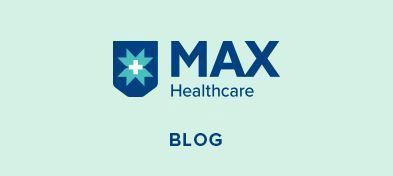
To Book an Appointment
Call Us+91 92688 80303Perils of brain stroke and how to prevent it
By Dr. Vivek Kumar in Neurology
Nov 29 , 2022 | 2 min read
Your Clap has been added.
Thanks for your consideration
Share
Share Link has been copied to the clipboard.
Here is the link https://www.maxhealthcare.in/blogs/perils-of-brain-stroke-and-how-to-prevent-it
A brain stroke can happen anytime and at any age. In India, there are around 4,500 incidents of brain stroke every day, which equals three people per minute; these occurrences are rising due to changing lifestyles, and brain stroke is the leading cause of disability worldwide in India. It is the second leading cause of death. However, simple measures can prevent about 90% of brain strokes.
What is a stroke?
A stroke happens when the blood supply to a part of the brain is cut off. Without blood, the brain cells get damaged. There are two types of brain strokes - Ischemic and Hemorrhagic.
Ischemic strokes:
These occur due to an obstruction in a blood vessel supplying blood to the brain. An obstruction of blood flow can form a blood clot in the brain. This is called Cerebral Thrombosis. Blood vessels can also be blocked by a blood clot formed in another part of the body, usually the heart or large arteries of the upper chest and neck, which travels to the brain. This is called a cerebral embolism.
Haemorrhagic strokes:
These happen when a weakened blood vessel ruptures and bleeds into the brain. Hypertension is the most common cause of this incident. The bleeding can be caused by an aneurysm or an arteriovenous malformation (AVM).
Recognising the early signs of a stroke and treating it as a medical emergency by getting admitted to a specialised Stroke Centre with a dedicated stroke team can improve the outcome.
The main symptoms of a stroke can be checked with the word FAST.
-
Face - Is the face drooping to one side?
-
Arms - Is there a Weakness in one arm?
-
Speech - Is the speech slurred or garbled?
-
Time - If these symptoms occur, it’s time to call the emergency services.
Treatment of ischemic stroke
Key facts of ischemic stroke treatment:
-
Early recognition makes a high difference. Knowing the signs of a stroke and getting treated quickly saves lives and improves recovery. About one in 10 people recover when cared for in a specialised stroke unit.
-
Clot-busting drugs (TPA for thrombolysis) increase the chance of good outcomes by 30%. This treatment can be administered within 4.5 hours of the symptoms manifesting. The earlier it is given, the better the effect.
-
Clot-retrieval treatment increases the chances of a good outcome by 50%. This involves removing a blood clot, improving survival rates, and reducing disability in ischemic stroke caused by artery blockage.
-
Rehabilitation is a critical step in the treatment process.
-
One in four survivors may suffer from another stroke. Treatments that prevent another stroke include drugs to lower blood pressure and cholesterol, anti-patient therapies, anti-coagulation for atrial fibrillation surgery, or stenting for patients with Severe carotid artery narrowing.
-
Lifestyle changes can reduce the risk of another stroke; Changes include eating well, being physically active, being tobacco-free, managing stress, and limiting alcohol consumption.

Written and Verified by:

Related Blogs

Oct 27 , 2020 | 3 min read

Dr. Amit Gupta In Spine Surgery , Neurology
Nov 07 , 2020 | 2 min read
Blogs by Doctor

Treatment Dilemmas in Women With Epilepsy
Dr. Vivek Kumar In Neurosciences
Jul 26 , 2017 | 2 min read

The Evolution of Advanced Brain Stroke Centers: Optimizing Stroke Management
Dr. Vivek Kumar In Neurosciences , Neurology
Nov 01 , 2023 | 4 min read
Most read Blogs
Get a Call Back
Related Blogs

Oct 27 , 2020 | 3 min read

Dr. Amit Gupta In Spine Surgery , Neurology
Nov 07 , 2020 | 2 min read
Blogs by Doctor

Treatment Dilemmas in Women With Epilepsy
Dr. Vivek Kumar In Neurosciences
Jul 26 , 2017 | 2 min read

The Evolution of Advanced Brain Stroke Centers: Optimizing Stroke Management
Dr. Vivek Kumar In Neurosciences , Neurology
Nov 01 , 2023 | 4 min read
Most read Blogs
Other Blogs
- Common Perianal Problems - Pain Bariatric surgery
- Top 10 Myths about Breast Cancer
- Breast Cancer - It Is the Beginning of a Journey Rather than the End of the Road
- How effective is it to prevent unwanted pregnancies?
- Lower Back Pain Due to Spinal Arthritis Non-surgical Pain Management Options
- Meningioma Brain Tumors: Answers to Commonly Asked Questions
- How Can I Manage My Diabetes?
- Health Rumours About Cancer – Busted Or Confirmed
- Gastrointestinal cancers and 8 tips to avoid them
- Cancer
- Gynaecologic cancer care - in the times of pandemic
- The early symptoms and signs of lung cancer
Specialist in Location
- Best Neurologists in Saket
- Best Neurologists in Gurgaon
- Best Neurologists in Delhi
- Best Neurologists in India
- Best Neurologists in Ghaziabad
- Best Neurologists in Shalimar Bagh
- Best Neurologists in Patparganj
- Best Neurologists in Mohali
- Best Neurologists in Dehradun
- Best Neurologists in Bathinda
- Best Neurologists in Panchsheel Park
- Best Neurologists in Noida
- Best Neurologist in Nagpur
- Best Neurologist in Lucknow
- Best Neurologists in Dwarka
- CAR T-Cell Therapy
- Chemotherapy
- LVAD
- Robotic Heart Surgery
- Kidney Transplant
- The Da Vinci Xi Robotic System
- Lung Transplant
- Bone Marrow Transplant (BMT)
- HIPEC
- Valvular Heart Surgery
- Coronary Artery Bypass Grafting (CABG)
- Knee Replacement Surgery
- ECMO
- Bariatric Surgery
- Biopsies / FNAC And Catheter Drainages
- Cochlear Implant
- More...





